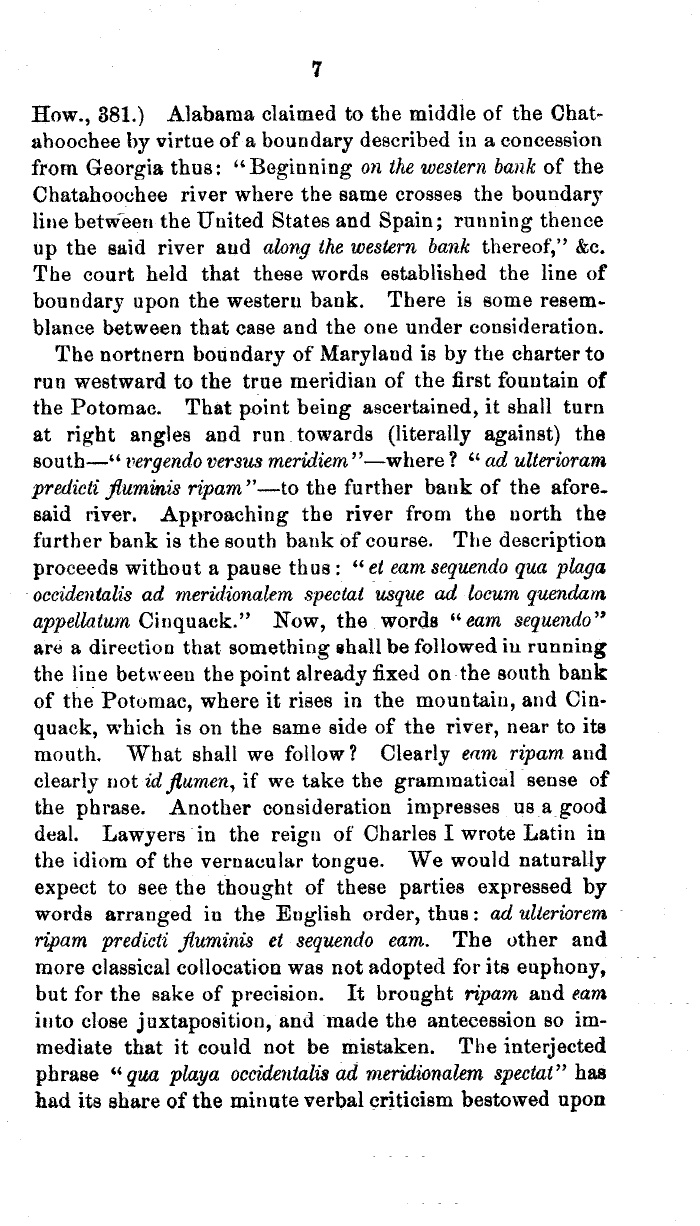| How., 381.) Alabama claimed to the middle of the Chat-
ahoochee by virtue of a boundary described in a concession
from Georgia thus: "Beginning on the western bank of the
Cbatahoochee river where the same crosses the boundary
line between the United States and Spain; running thence
up the said river and along the western bank thereof," &c.
The court held that these words established the line of
boundary upon the western bank. There is some resem-
blance between that case and the one under consideration.
The nortnern boundary of Maryland is by the charter to
run westward to the true meridian of the first fountain of
the Potomac. That point being ascertained, it shall turn
at right angles and run towards (literally against) the
south-,' vergendo versus meridiem "-where ? It ad ulteriorayn
predicti fluminis ripam"-to the further bank of the afore-
said river. Approaching the river from the north the
further bank is the south bank of course. The description
proceeds without a pause thus: ~l et eam sequendo qua plaga
oceidentalis ad meridionalern spectat usque ad locum quendarn
appellatum Cinquack." Now, the words °1 eam sequendo"
are a direction that. something @hall be followed in. running
the line between the point already fixed on the south bank
of the Potomac, where it rises in the mountain, and Cin-
quack, which is on the same side of the river, near to its
mouth. What shall we follow? Clearly ezm ripam and
clearly not id flum.en, if we take the grammatical sense of
the phrase. Another consideration impresses us a good
deal. Lawyers -in the reign of Charles I wrote Latin in
the idiom of the vernacular tongue. We would naturally
expect to see the thought of these parties expressed by
words arranged in the English order, thus: ad ulteriorem
ripam predicti ,fluminis et sequendo cam. The other and
more classical collocation was not adopted for its euphony,
but for the sake of precision. It brought ripam and eam
into close juxtaposition, and -made the antecession so im-
mediate that it could not be mistaken. The interjected
phrase 1° qua playa occidentalis ad meridionalem spectat" has
had its share of the minute verbal criticism bestowed upon
|

